The Argument Used to Justify Secession as a Remedy
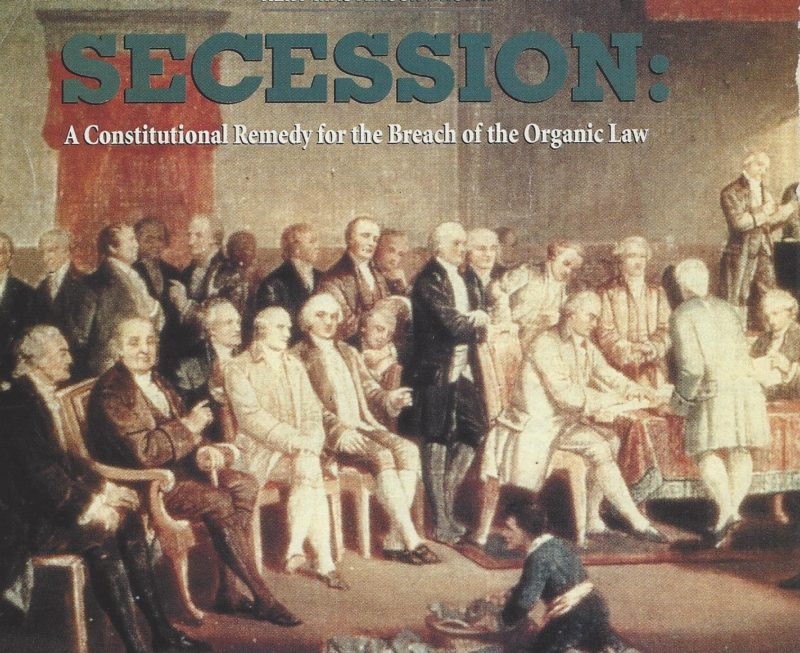
The Civil War pitted the armed forces of twenty-three Northern states against the military forces of eleven Southern states. The underlying issue was whether or not a state or a group of states could leave the Union. After four years of war and the death of over seven-hundred thousand soldiers, the Northern states won the war and the argument.
In 1860-61, Southern leaders argued that the United States Constitution was a compact between sovereign states, where-in those states gave some of their authority to a central authority for the mutual benefit of the said states. And, that a breach of the contract could trigger secession.
Was this a new argument to justify secession? Let’s see.
In February of 1787, the Congress called for delegates from the thirteen states of the Confederacy to meet and consider revising the Articles of Confederation. Their charge was to consider ways to render,
“…the Constitution of the federal adequate to the exigencies of the Union…”
Subsequently, the state legislatures of twelve states sent delegates to meet in Philadelphia for that purpose. Forty-five delegates met for the first time on May 25, 1786. After much debate, thirty-eight of these delegates signed a document and sent it to the congress of the Confederation on September 17, 1786. This body sent it to the states for ratification.
Therafter, in each state, delegates to state conventions were elected. their charge was to review and possibly ratify the the proposal. As a result five state conventions quickly ratified the document. The process did not go quite as rapidly through the nation’s two largest state conventions, New York and Virginia.
The document (Constitution) was finally ratified by the Virginia delegates in June of 1788. but not without a proviso which stated:
“We, the delegates of the people of Virginia … Do in the name and in behalf of the people of Virginia, declare and make known, that the powers granted under the Constitution being derived from the people of the United States, may be re assumed by them, whensoever the same shall be perverted to their injury of oppression.”
Still, the vote in the Virginia Constitutional convention was close, 89 to 79 in favor of ratification.
In the New York convention, a similar and fierce debate developed. By a vote of 30 to 27 the Constitution was ratified, But only with a proviso of their own.
“We, the delegates of the people of New York … Do declare and make known … That the power of government may be re assumed by the people whensoever it shall become necessary to their happiness. “
The ratification convention of Rhode Island adopted similar language when it ratified the Constitution.
Thus, it was, that the framers and the state convention ratifiers, understood the newly adopted Constitution to be a compact. and, like all compacts was subject to the remedy of recession or annulment upon a breach. Just what constituted a breach to justify secession was not determine at that time.
We will discuss this issue further along with Lincoln’s response to secession, in the next blog.
At any time, if you wish to stop receiving my Civil War blogs, simply notify me at civilwarnovels@gmail.com. Please include your first name in that notification.
To see my historical novels and other neat things, go to www.civilwarnovels.com
Only One Assassin?
The FBI Report of December 9, 1963 concluded that Lee Harvey Oswald, acting alone, fired his rifle three times from his perch on the sixth floor of the Book Depository Building, all from behind the President.
1. The first shot hit the President in the back
2. The second shot hit Governor Connelly in his back 1.08 seconds later.
3. The third shot hit President Kennedy in the head.
However, during repeated reenactments, expert riflemen could not fire Oswald’s Italian made bolt-action carbine a second time within the 1.08 time frame for the second shot. (As shown in the Zapruder film.)
Therefore, since Oswald could not have fired the shot that hit Governor Connelly, there had to be more than one assassin in Daeley Plaza on November 22, 1963.
But that conclusion did not fit the one reached by the FBI Report that Lee Harvey Oswald acted alone. So, the Warren Commission proposed a different scenario in support the lone gunman declaration in the FBI Report.
The Warren Commission staff suggested that the bullet that hit President Kennedy in the back, exited his body through his throat. Then, that same bullet entered the back of Governor Connelly, exited, and hit his wrist, exited and lodged in his thigh. (see illustration below) At the time, critics called this the ‘magic bullet’ theory.
However, during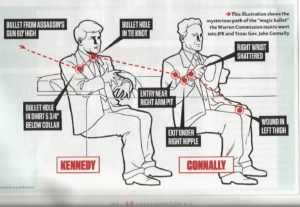 the autopsy conducted at Bethesda Naval Hospital in Washington D.C., the physicians described a different scenario. They reported that a bullet had entered the Presidents back five and one/half inches below his collar and two inches to the right of his spine.Further, they reported that the projectile penetrated his body at a 60 degree angle to the depth of two inches. And, they said in their autopsy report, that bullet did not exit his body.
the autopsy conducted at Bethesda Naval Hospital in Washington D.C., the physicians described a different scenario. They reported that a bullet had entered the Presidents back five and one/half inches below his collar and two inches to the right of his spine.Further, they reported that the projectile penetrated his body at a 60 degree angle to the depth of two inches. And, they said in their autopsy report, that bullet did not exit his body.
Therefore, we must conclude that the bullet that hit President Kennedy in the back could not have caused the wounds to Governor Connelly.
So,we must also conclude that there had to be more than one assassin in Daeley Plaze on November 22, 1963.
Exit Wound at Back Right of Head
In their emergency room reports, several Parkland Hospital physicians described a serious and fatal wound to the president on the right rear of his head. In the attached photo, they each physican graphically describe the location of the head wound (see the attached montage photograph). The insert below is of Doctor Carrico, Dr. McCelland, Dr. Jenkins and Dr. Crenshaw. All of these men were present in the emergency room at Parkland Hospital and reported their observations of what they described as an exit wound, in their hospital reports.
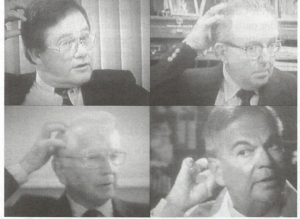
The reader should remember that their observations were made immediately after the assassination and their reports were written within hours of the assassination of President Kennedy. None of these men even knew of the Zapruder film, or of the FBI Report or the Warren Commission Report in which it was insisted that all shots came from the rear of the president. These medical professionals shown here were untainted by such conclusions, made later to support a different conclusion i.e. a single shooting firing from behind JFK.
These same men testified in 1964 for the Warren Commission and for the Congressional Special Committee meeting in 1977. Their testimony on those occasions was consistent (it did not change) with their Emergency room hospital reports written on November 22, 1963.
There will be two more posts on this subject. Then I will wait for the release of the remaining documents before resuming comments. You can order one or both volumes of my historical novels dealing with the Kennedy assassination at the web site, The Kennedy Murder.com. You can use Pay Pal, or order through Amazon. The e books are available through Amazon.
Volume I is subtitled, Was Oswald the Only Assassin? The second volume is subtitled, Why Was Kennedy Killed? See more at the web site, The Kennedy Murder.com
President Kennedy’s Head Wound
 President Kennedy’s Head Wound
President Kennedy’s Head Wound
The medical professionals at Parkland Hospital’s emergency room discovered two wounds during their initial examination of President Kennedy. The first and most obvious to them, was an entry wound to the president’s throat.
The second and most damaging wound was an exit wound on the back right of JFK’s head. It was this second wound which they judged caused the president to lose almost a third of his brain.
Dr. Robert McClelland attached this crude freehand drawing to his Parkland Hospital emergency report. He testified that JFK was hit on the right with an exit wound in the back of his head. His testimony to the Warren Commission was supported by Dr. Kemp Clark, Dr. Paul Peters, Dr. Ronald Jones, Dr. Gene Akin in their sworn testimony. All of these medical professionals testified that this head wound was an exit wound.
At the scene of the murder, Patrolman Bobby Hargis testified that his uniform and motorcycle windshield was covered with blood and flesh. In the attached photo, Patrolman is seen the rear and left of President Kennedy.
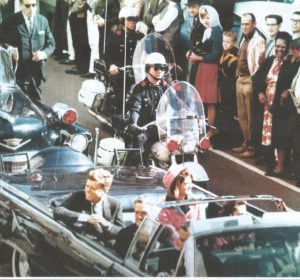
Bill and Gayle Newman were standing along the parade route. They reported to the Dallas police on November 24, 1963 that they saw a bullet hit President Kennedy on the front right of his head
The Zapruder film clearly shows a bullet hitting the president’s head in the right front. Thirty eight onlookers testified to Warren Commission personnel that they heard gunfire coming from the Grassy Knoll along Elm Street, behind them.
Never-the-less, the FBI Report and later, the Warren Commission Report insisted that all shots came from behind the President and were all fired by Lee Harvey Oswald from the Book Depository building. In his Warren Commission testimony, FBI Director J. Edgar Hoover testified, “there is not one scintilla of proof that there was a conspiracy (more than one assassin), foreign or domestic.”
Despite the testimony of the above professionals and others (see previous blog) to the frontal wounds to the throat and the head, Congressman Gerald Ford. a member of the Warren Commission, wrote for Life Magazine in October 1864, dismissing the existence of either wound.
“There is no evidence of a second gunman, or of other shots or other guns.”
THE FBI REPORT QUESTIONED
The FBI Report of December 9, 1963 was leaked to the media. In that report, the Bureau claimed that all shots fired at President Kennedy came from behind the president.
However, the reports filed by the emergency room doctors at Parkland Hospital lead us to believe otherwise. Several doctors and an attending nurse stated that they discovered an entry wound in the president’s throat.
Dr. Malcom Perry revealed this finding at a press conference held at 3:16 on November 22nd. During questioning, he repeated three times that the president’ throat wound was one of entry. As a result, the information about this throat entry wound was immediately and widely reported in the press. Following the press conference, Federal officials confiscated the recording of the Perry press conference. In a phone call that evening a federal official told Perry to change his hospital report about the throat wound being an entrance wound.
In the required written hospital report of their Emergency Room examination of President Kennedy, Doctors Carrico and Clark supported Dr. Perry’s finding. They repeated their observation during their testimony for the Warren Commission. In her Warren Commission testimony, nurse Margaret Henchliffe also concurred with them about the throat wound being one of entry, as did Dr. Paul Peters and Dr. Ronald Jones.
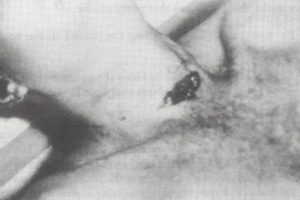
Note: The site of the entry wound referred to above was used for a tracheostomy performed on President Kennedy when he was being treated at Parkland Hospital. Thus, the wound in this photo shows the location of the original wound of entry but it does not reflect the small size of that wound. It does show the larger incision made for the tracheostomy.
Never-the-less, the FBI Report issued in December 1962 did not mention the testimony of these Emergency Room professionals. The Warren Commission Report issued in September 1963, dismissed their testimony and agreed with the FBI Report that all shots came from behind the president.
But, if the Parkland Emergency Room testimony given by multiple medical professionals that the wound in the president’s throat was one of entry is correct, there had to be more than one assassin. That would mean Lee Harvey Oswald could not have acted alone. Such a conclusion would have necessarily demanded a more thorough investigation; something President Johnson and FBI Director Hoover, agreed they did not want.
Next week, we will examine more disturbing findings from the Parkland Hospital emergency room.
The FBI Report
The President of the United States, John F. Kennedy was shot shortly after noon on November 22, 1963 while riding in the presidential limousine in Dallas, Texas. He was pronounced dead at Parkland Hospital at 1 PM that same day.
On Sunday, the 24th, the man who was accused of the president’s murder was killed while in Dallas police custody. The following day, Assistant Director of the FBI Sullivan ordered the folks in the Dallas FBI office to shut down any further investigation of the murder.
On December 9, 1963 the FBI leaked a copy of their report to the media. In that report, they concluded that:
1) Lee Harvey Oswald was the lone assassin. And that,
2) Lee Harvey Oswald fired three shots from the sixth floor of the Book Depository Building. And that,
3) All shots were fired from behind President Kennedy.

The Report further attested that:
1)The first shot hit President Kennedy’s in his back, five and one half inches down from his collar and two inches to the right of his spine.
2)A second shot fired one and eight tenths of a second later, hit Governor Connally in his back.
3)The third shot hit President Kennedy in the head, killing him.
Time Out for JFK
You might be aware that the people at the National Archives recently released a batch of documents related to the President Kennedy assassination. Even then, the intelligence folks in Washington DC asked that some documents still be withheld. President Trump gave them additional time to release those.; but not much time.
Historians who have reviewed some of the released documents have not yet found anything shocking. Or, for that matter, information that wasn’t known long ago. Comments from reviewers I have read seem to support the FBI and Warren Commission reports. That is, a single shooter killed President Kennedy and that it was Lee Harvey Oswald.
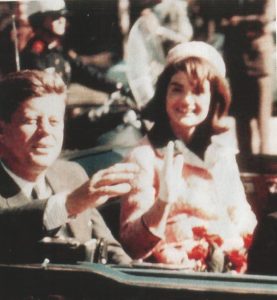
Above is a photo of President and Mrs. Kennedy in Dallas November 22, 1963. He is in a motorcade waving to the thousands of people standing along the parade route that day.
As you might know, I have written a historical novel, The Kennedy Assassination: Was Oswald the Only Assassin?This book, and its companion, The Kennedy Assassination: Why was Kennedy Killed? Can be obtained at Amazon.com. Enter my name Michael J. Deeb and order either a print or an e book. If you go to my website, www.The Kennedy Murder.com. you can order the autographed books directly from me via pay pal. And, I pay the shipping.
So, the purpose of this message is that I will send you blogs over the next few weeks relating to the Kennedy assassination. The content will be the result of my research and contained in the first volume, Was Oswald the Only Assassin. In these blogs, I will only use information available to the FBI and the Warren Commission before they issued their reports. I hope you enjoy the read.
Spring 1862: Military Moves in the West
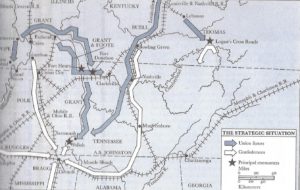 Earlier in April the Confederate forces under General Albert Sidney Johnston, prepared a response to the Union victory at Fort Donelson. Because of that loss, the Confederate leader was forced to move his line of defense in the West further south. So, he abandoned both his headquarters at Bowling Green, KY and Nashville, the capital of Tennessee. Then, he gathered and reorganized his forces at Corinth, Mississippi.
Earlier in April the Confederate forces under General Albert Sidney Johnston, prepared a response to the Union victory at Fort Donelson. Because of that loss, the Confederate leader was forced to move his line of defense in the West further south. So, he abandoned both his headquarters at Bowling Green, KY and Nashville, the capital of Tennessee. Then, he gathered and reorganized his forces at Corinth, Mississippi.
He pulled infantry from all over his command in the west. He even took soldiers who had been assigned to the defenses of New Orleans. By the end of March, he had almost 30,000 effectives under his command gathered at Corinth. He was also expecting another 10,000 men from Arkansas under the command of General Card.\
Grant, meanwhile, had moved his force of some 30,000 men south of Fort Donelson to Pittsburgh Landing, Tennessee. There, he was ordered to await General Buell’s force of about 25,000 men coming by boat fro East Tennessee. Grant set up his headquarters some six miles north of Pittsburg Landing at an estate on the Tennessee River.
General Johnston planned to attack and defeat Grant before Buell’s army arrived with his reinforcements. Then, he intended to turn his victorious army and defeat Buell. With such a Confederate victory, Johnston believed hw would accomplish several things. Among them, the Confederate line of defense could once again be moved north. His forces would also regain the initiative in the West. and, the territorial losses sustained by the defeat at Fort Donelson would be reversed.
Early 1862 Military Moves in the West: Part 3
Grant was able to follow-up the naval victory at Fort Henry with an attack against Fort Donelson on Feb. 12, 1862. If victory was to be won here, it would be up to Grant’s infantry. By the time he reached Fort Donelson his force had grown to nearly 25,000 men.
Grant had an additional advantage in that the defending Confederate force was led by two political appointees Generals Pillow and Floyd. Neither of them had ever led men in battle. After their performance at Fort Donelson, neither would ever be allowed to do so again.
Fort Donelson had been better positioned and build by Confederate engineers than Fort Henry and it had better armament. Defended by well over 15,000 men, it would be be as easily captured wither. Never-the-less, Grant intended to move against the fort as soon as his troops were in position.
On Feb., 14th, Captain Foote sailed his fleet of ironclads and timberlands vessels withing 350 yards of the fort. Moving on swift water his ships suffered such serious damage from the defender’s guns that he had to withdraw all of his ships. In fact, Foot’s ship, the st. Louis, was hit, too. The ship’s pilot was killed and Foote was fatally wounded.
Meanwhile, Grant’s force began to dig in, surrounding the fort.
Before he could complete these arrangements, however, CSA General Floyd orderd an attack against the weakest part of Grant’s position. This attack was designed to forge an escape route away from Donelson and a path toward Nashville. After what has been described an fierce fighting, the Confederates were successful. But, instead of taking advantage of the opening, thus saving his army, CSA General Pillow ordered a withdrawal to the safety of the defenses of the fort.
Grant then moved quickly to close the opening in his lines and ordered a general attack of his own. As a result, the original lines were re-established. Where-upon, Generals Floyd and Pillow decided to flee. Colonel Nathan Bedford Forrest refused to surrender and escaped instead with his cavalry to Nashville. General Buckner was left to surrender Fort Donelson and with it, an entire Confederate army of over 15,000 men.
When Buckner asked for terms, Grant replied, “No terms except unconditional surrender can be accepted. I propose to move immediately upon your works.”
General Buchner surrended Fort Donelson and with it over 15,000 soldiers. From this point on, Gen Ulysses S. Grant was referred to in the Northern press as ‘Unconditional Surrender Grant’.
Early 1862 Military Moves In the West: Part 2
Once he approved the joint naval and land operation against two Tennessee River fortifications, Fort Henry and Fort Donelson twelve miles away, General Halleck gave the project his full support. He even transferred 5,000 soldiers to Grant from General Buell’s army.
The stakes were high. At stake for the Confederates was their entire position in the state of Kentucky, control of Nashville, Tennessee and the fort which dominated the Mississippi River at Columbus, Kentucky. Also, at risk was the Confederate control of the Memphis & Charleston railroad in western Tennessee.
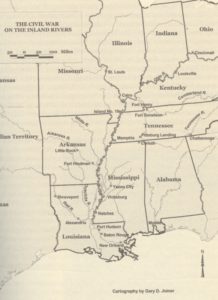
In preparation for the attacks, Grant had difficulty finding adequate river transportation for his approximate 15,000 man force. Divided into two divisions, he could only move one at a time into position for his move against Fort Henry. That problem and bad roads & streams swollen by spring floods slowed him down, too. So, naval Captain Andrew Foote, began the attack against fort Henry without infantry support on the 6th of February, 1862.
Foote’s ironclads led the attack firing directly into Fort Henry. The Timberland boats under his command followed in line to lob mortar shells into the fort, as well. In short order, the fort’s building and tents were ablaze and only four of it’s eleven guns remained in operation. But, the Confederates gave as good as they got, damaging several of the Federal boats.
Never-the-less, anticipating the expected arrival of Grant’s force of 15,000 men, the Confederate Commander, General Tilghman, ordered the white flag of surrender raised. Then, he directed his troops to leave for Fort Donelson twelve miles away.
Several of Foote’s boats were damaged in the fight and would not be available for the attack on Fort Donelson. The capture of Fort Henry had been a naval victory. But the subsequent assault on Fort Donelson would be up to the Federal infantry.
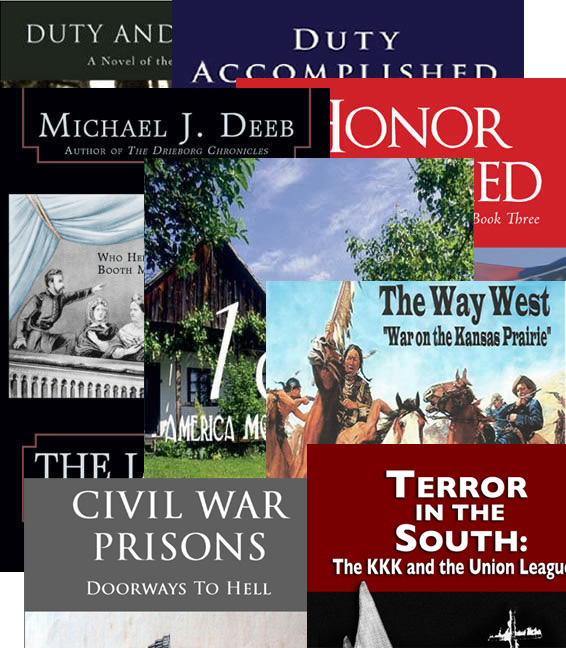
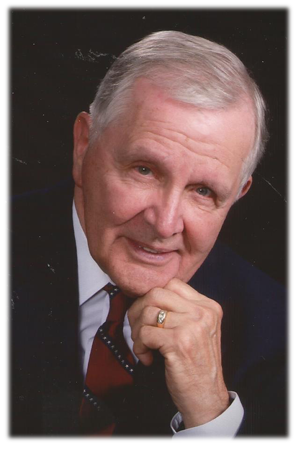
 A Great Read! I couldn’t put this book down once I got started. The detail was great and I really like the main character, Michael. Knowing that so much research went into this book made it exciting to read!
A Great Read! I couldn’t put this book down once I got started. The detail was great and I really like the main character, Michael. Knowing that so much research went into this book made it exciting to read!